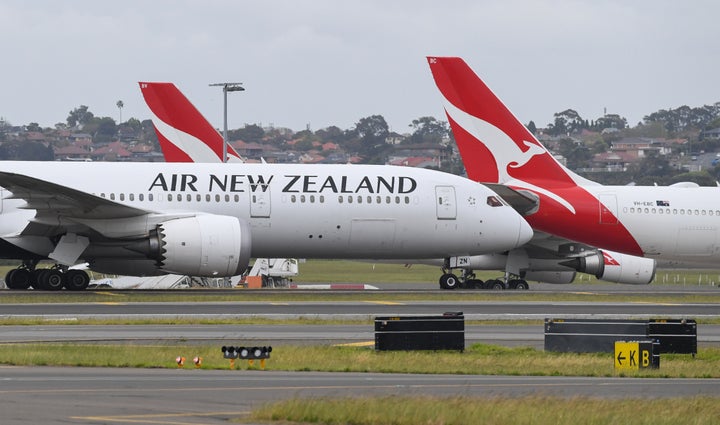Never miss a thing. Sign up to HuffPost Australia’s weekly newsletter for the latest news, exclusives and guides to achieving the good life.

Australia has confirmed the first stage of the trans-Tasman travel bubble with New Zealand will kick off in two weeks.
Deputy Prime Minister Michael McCormack said New Zealanders will be able to travel to New South Wales and the Northern Territory from midnight on Friday, October 16 - without the 14-day hotel quarantine.
South Australia is expected to join NSW and the NT at a later date.
Australia in March closed its borders to all non-citizens and permanent residents to slow the spread of COVID-19.
McCormack said it would be up to NZ Prime Minister Jacinda Ardern when Australians would be allowed to visit New Zealand.
“Certainly if Jacinda Ardern, the prime minister in New Zealand, wants to have Australians going to New Zealand, then that will be up to her and New Zealand as to how those arrangements can be put into place and under what conditions they can be put into place,” McCormack told reporters.
“But as I’d say, Northern Territory and New South Wales, very much open.”
McCormack added it means an extra 325 passengers a week can come into Sydney, because the pressure is being eased in terms of people from New Zealand coming here who won’t have to do a hotel quarantine.
This first stage of the trans-Tasman travel bubble is part of the government’s plan to “open up Australia to the world”, McCormack said.
Some people online have pointed out the one-way system is less than ideal.
New Zealand has effectively eradicated COVID-19, reducing the threat of additional infections in Australia.
While Australia has eased restrictions on its closest ally, Ardern said earlier on Friday those who travel to Australia would have to quarantine on their return.
She also said New Zealand would not open its borders to Australians for now.
The travel route is a boost to Australia’s economy, which shrank 7% in the three months ended June, the most since records began in 1959, as the virus curbs paralysed business activity.
New Zealand is Australia’s largest market for visitor arrivals, surpassing China due to the pandemic, according to Australian Tourism 2020 data.
Australia has in recent days accelerated plans to stoke economic growth as COVID-19 cases slow significantly.
New daily coronavirus infections in Victoria have fallen to a near four-month low, authorities said on Friday,
Victoria said seven people have been diagnosed with COVID-19 in the past 24 hours, down from 15 on Thursday and near the four-month low of five cases reported on September 28.
The decline in COVID-19 cases comes nearly two months after Victoria imposed a stringent lockdown across its state capital, Melbourne.
The bulk of restrictions will only be eased when the average for new daily cases over a two-week window falls below five.
The 14-day rolling case average for Melbourne is now down to 12.8, after falling from 15.6 on Thursday.
Victoria accounts for 90% of national COVID-19 deaths. Australia, with 890 fatalities, has fared far better than many other developed countries.
Tasmania Premier Peter Gutwein said Friday the island state will open its borders to low-risk states from October 26.
“Low-risk states include South Australia, Western Australia, Queensland, the two territories, Northern Territory and the ACT, and New South Wales is looking very promising as well but we will continue to keep New South Wales under advisement for the next week or so,” he told a press conference.
With additional reporting from Reuters.